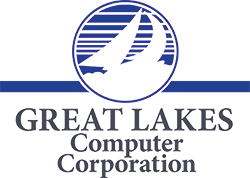[vc_row][vc_column][vc_column_text] Printers can be a real pain. They often don’t work quite how you’d expect and fixing them can seem daunting. Before your frustration overwhelms your better judgement, read these 5 common printer problems and how to fix them from PCRepair.com.
Printers can be a real pain. They often don’t work quite how you’d expect and fixing them can seem daunting. Before your frustration overwhelms your better judgement, read these 5 common printer problems and how to fix them from PCRepair.com.
Problem: Printing is too slow.
Solution: Rev up printer performance–and save ink in the process–by reducing print quality for everyday output. While printer settings vary by model, here’s how to switch to draft-printing mode in most Windows apps. Select Print and Properties, and then look for a setting that reduces print quality. With the HP Photosmart 8450, for instance, change the default print quality setting from Normal to Fast Draft (click screen-shot at right). Other speedup suggestions: Print pages from websites without graphics, and add RAM to your printer, if possible.
Problem: Windows is sending print jobs to the wrong printer.
Solution: For some mysterious reason, Windows may select a new default printer–the one it automatically sends print jobs to. (This happened to me when I upgraded from Vista to Windows 7.) To fix this glitch in Windows 7, click Start (the Windows icon in the lower-left corner of the screen) and select Devices and Printers. Under Printers and Faxes, right-click the printer you want to make the default, and select Set as default printer.
Problem: My prints are too light, too spotty, or have horizontal lines.
Solution: You may have a clogged print head, a problem that can occur if you use an inkjet printer infrequently. Your printer’s utility program can clean out the dried ink, and print a test page for inspection. The step-by-step instructions on how to do this vary by printer. From the Windows 7 Start menu, click Devices and Printers or Control Panel, and look for your printer’s utility app.
Problem: My wireless printer is too slow.
Solution: To get the best performance from a network printer, it’s hard to beat a wired, Ethernet-cable-to-router connection. Wireless printing may be more convenient in many homes and offices, but it has its limitations. Since Wi-Fi speeds slow down with distance, you’ll want to place your wireless printer as close as possible to the router. Also, make sure your Wi-Fi printer or any wireless print server it connects to supports the 802.11n spec, which can rival the performance of 100-mbps Ethernet.
Problem: I don’t know how to fit more text on one page. How do I do it?
Solution: Shrinking text to fit two pages on one sheet saves money (you’ll buy less paper) and speeds up printing (fewer pages to print). This two-for-one approach is best for spreadsheets, receipts, and other documents that are still legible once shrunken. In any Windows program, select Print and Properties, and then look for a printer setting that lets you increase the number of pages per sheet.
If you don’t have the time, energy, or expertise to take on printer repair and maintenance, it’s time you called in the professionals. The Managed Print Program at Great Lakes Computer can save you time and money!

